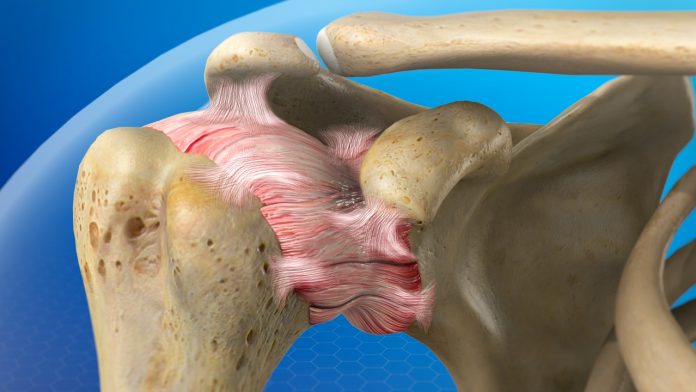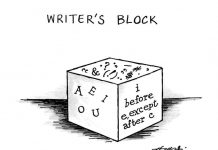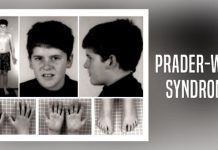Frozen shoulder is a condition in which the shoulder joint becomes progressively stiff and usually painful, with restricted movement in all directions. Upper arm pain is also a feature and both active and passive movements are limited, that is when the arm is moved by the patient and by the examiner.
The alternative name for it is adhesive capsulitis. The ‘itis’ bit in the name suggests that the joint is in some way inflamed but in truth nobody is quite sure what causes the pain and stiffness. It is thought the soft tissues in the area become tight or contracted therefore limiting the movement of the joint.
Anatomy of the Shoulder
The shoulder is the most mobile joint in the body being able to move in almost any direction. This movement however comes at a cost: the shoulder is highly dependent for its integrity on the ligaments and tendons surrounding it. This makes it particularly vulnerable to soft-tissue injury.
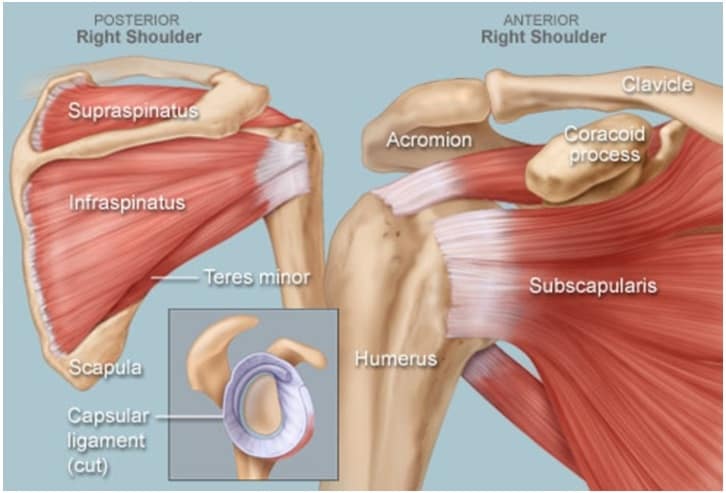
The shoulder comprises of four joints which act together to provide arm movement.
- The glenohumeral joint: the shoulder joint proper. The upper arm bone forms the joint with the socket on the shoulder blade (scapula).
- The acromioclavicular joint: the acromion which is the bony tip on the top of the scapula together with the clavicle (collar bone)
- The sternoclavicular joint: formed by the inner end of the collar bone with the sternum (breast bone).
- The scapulothoracic articulation: this refers to the movement of the scapula over the back of the chest.
A restriction in any one of these joints is likely to affect the proper function of the others. Frozen shoulder is a dysfunction of the glenohumeral joint but can affect one or more of the other shoulder joints. Conversely a problem with any of the others can have a knock on effect on the glenohumeral joint and thus bring on frozen shoulder.
Causes of Frozen Shoulder
The major cause of frozen shoulder is described as ‘primary’ in many textbooks. This simply means that no one knows. There have been suggestions that psycho-emotional stress may be a factor.

The usual non-primary cause is trauma of some sort to the soft tissues of the shoulder, the most common of these being rotator cuff injury. This causes pain and stiffness in the shoulder and upper arm but the limitation in movement is mainly to active abduction, that is lifting the arm from the side. Rotator cuff problems which do not resolve quickly can lead to frozen shoulder.
Other causes are myocardial infarction, stroke, lung disease and neck problems. Anything that causes prolonged immobility of the shoulder or interferes with the nerve supply to it can lead to frozen shoulder.
Treatment of Frozen Shoulder
Frozen shoulder can be resistant to treatment but the good news is that it nearly always gets better eventually, although it can take up to eighteen months, even if no treatment is effective.
However because this is a disabling and unpleasant condition it’s always worth trying treatment especially in the early stages when it’s more likely to be effective.
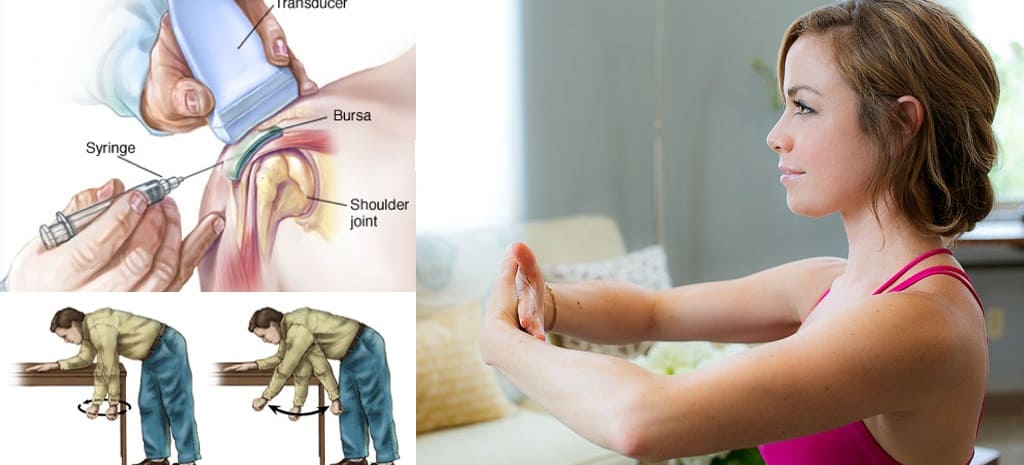
- Medication: non-steroidal anti-inflammatory drugs are used as a first line. Oral steroids are also given sometimes. These can relieve the pain but normally do little to increase movement.
- Injections: a mixture of steroid and local anaesthetic is injected in to the joint.
- Manipulation: carried out under anaesthetic when the condition does not resolve at all. Manipulation without anaesthetic can be carried out at an earlier stage providing that the pain has abated somewhat.
- Exercises: probably the most important treatment of all. As soon as pain levels reduce frequent exercises to mobilise the joint will help shorten the course of the condition.
- Trigger point therapy: deep massage of the shoulder area with trigger point treatment is worth trying especially in conjunction with exercises and gentle manipulation.
- Acupuncture: again more likely to be effective if carried out in conjunction with exercises and massage.
This article is for information only. If you have any health concerns you should consult the appropriate health professional.


